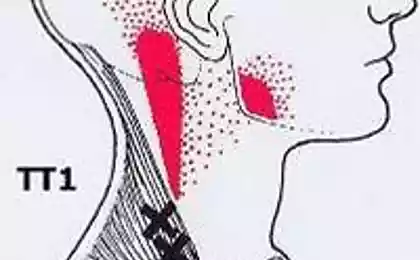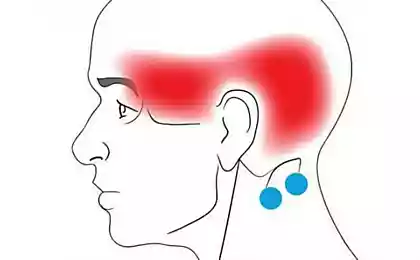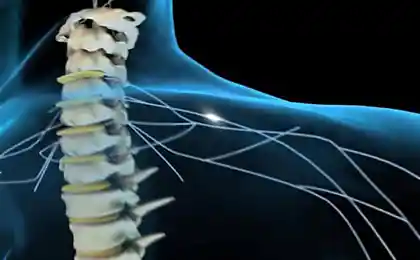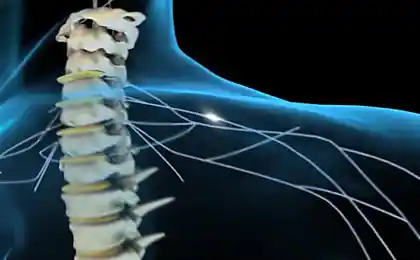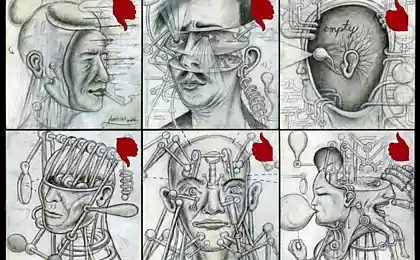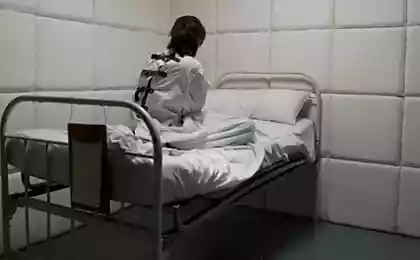564
THE PHENOMENON OF TRIGGER POINTS
Pain that is associated with primary dysfunction of skeletal muscles, often remain unrecognized, which is connected with objective diagnostic difficulties, and low awareness of physicians about the trigger points (TT) and myofascial pain.
Trigger point – the area of increased sensitivity (giperestrogenia region) within the local muscle of the seal manifested, sharply painful on palpation and participate in a variety of muscular-tonic and vegetative reactions (synonyms: local muscle hypertonicity, myofascial trigger point).
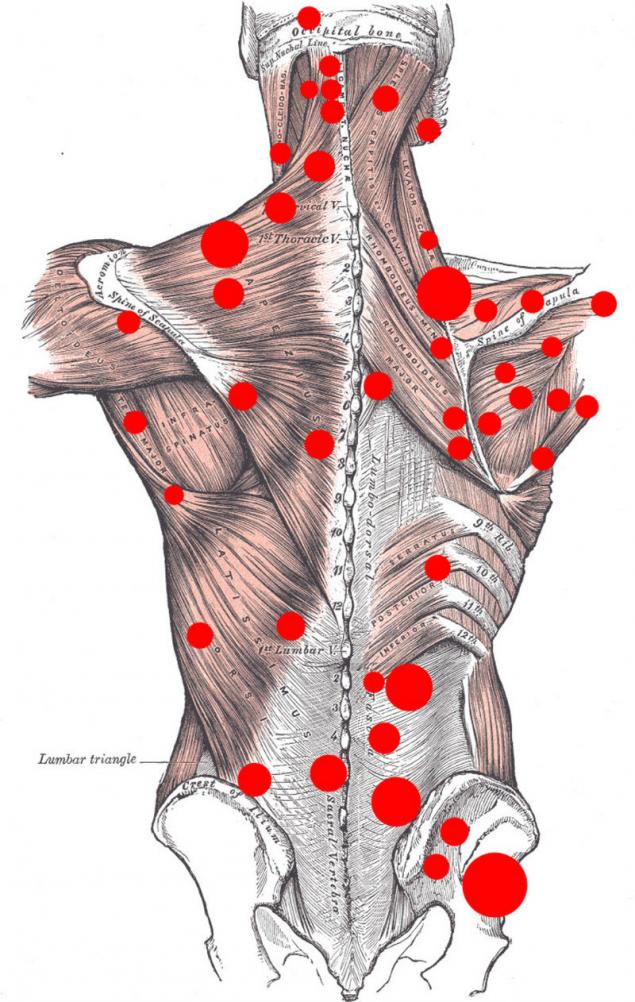
Regardless of the activity, the presence of trigger points leads to dysfunction of the muscle.
TT can be formed in virtually all soft tissues (including fascia), but dominate the large skeletal muscles, performing static functions. TT is most frequently found in the muscles of the neck and shoulder girdle (the trapezius, the rotators of the neck, scalene, levator scapula, suprascapular, supraspinatus, infraspinatus muscles) and the pelvic region and masticatory muscles.
Important in the development of TT have the same type of movement; a long, forced position of the body or its individual parts (static postural-tonic muscle overload); including a significant kinetic tension of the musculoskeletal system; the uneven rhythm of business operations, trauma, microtrauma. The reason for clinical manifestation of TT can be relapses of chronic visceral diseases, as well as colds and allergies.
Morphological changes in the zone TT: studying biopsy material that contains trigger points, using a light microscope or denies the existence of organic pathology, or identifies non-permanent non-specific degenerative changes in the muscles. Electron microscopic studies allow to find during the initial stages of the disease, mitochondrial swelling, changes of myofibrils, irregular sarcomeres location.
Biochemical studies show that the area TT (local hypertonicity of the muscles), the accumulation of biologically active substances (BAS): the kinins, prostaglandins, heparin, histamine. It is assumed that they are secreted by mast cells in Association with myogenic ischemia, hypoxia, acidosis, disorders of microcirculation and, in turn, do contribute to increased capillary permeability.
It is believed that the object of the irritation of biologically active substances are mostly free nerve endings (nociceptors) associated with sensory fibers II, III and IV. They Innervate, primarily, ligaments, capsules of joints, adipose tissue, periosteum, skeletal muscle and the outer shell of the blood vessels. Most of the deep tissue nociceptors polymodal, and are activated by mechanical and chemical means.
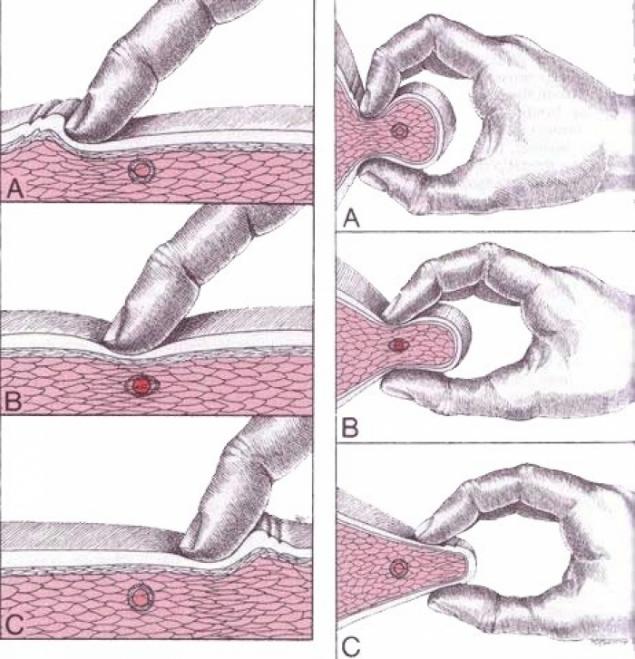
The most famous theory of the "mediator" of the origin of TT is the concept of John.G. Trewhella and D. G. Simons: if the damage of the sarcoplasmic reticulum in muscle fiber is a region of local increase in the concentration of calcium ions, using ATP energy, causing the contraction of individual sarcomeres, forming the segment of stable contractures. In the area of microtrauma produces a large quantity of platelet — sources of serotonin and other biologically active substances that promote vascular spasm and chemical sensitization of nociceptors.
TT can be active (are relatively rare and appear spontaneous pain, aggravated by stretching the muscle) and latent (revealed only at palpation). Frequency of TT (active) reaches its maximum in middle age, more frequently in women. TT a lot of latent diagnosed in the elderly.
Both the TT can be a source of spasm, restriction of movements, shortening and weakness of the affected (stakeholders) groups of muscles; mechanical compression contributes to the appearance of twitching of individual muscle fibers (i.e., local convulsive response), vascular, secretory or vegetative pilomotor reactions, is of decisive importance is not the amount of pressure, and its speed.
Stimulation of TT triggers pain symptoms nonsegmental character to the remote, but distinct from it a "characteristic pattern" (pattern) of pain. It should be remembered that TT are pathognomonic symptom of myofascial pain syndrome MPBS).
The characteristics of pain arising from active (myofascial) TT: 1 pain has its own pattern of distribution (specific pattern) and does not meet dermatomes, mytonomy or sclerocornea distributions of innervation;
2 pain referred from myofascial trigger points, is nonsegmental in nature;
3 the pain is localized deep in the muscle tissue;
4 pain can be of different nature intensity;
5 the pain may occur at rest or only with movement;
6 the pain increases when you run a test on ischemic compression or puncture trigger points injection needle;
7 the pain may appear suddenly, apparently as a result of muscle tension, or gradually in the chronic overload of the muscle.
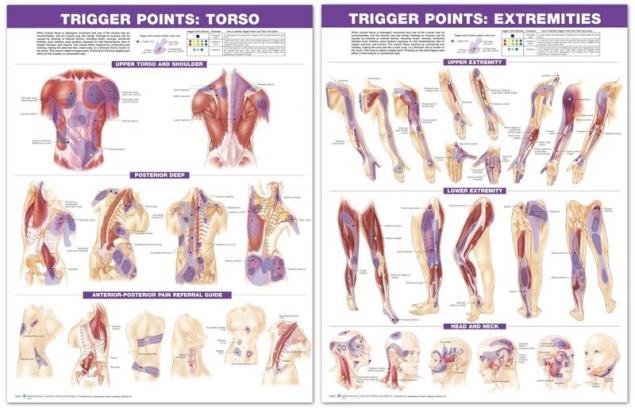
Diagnostic criteria MFBS:
1. the "large" criteria (you must have all 5): complaints of regional pain; palpable "taut" cord in the muscle; within the "tight" strand there is an area of high sensitivity; a characteristic pattern of referred pain or sensitive disorders; limitation of range of motion;
2. "small" criteria (requires 1 of 3): reproducibility of pain or sensitive to irregularities in the stimulation of trigger points; local wince to palpation of the trigger points the concerned muscle or when injected into the trigger points; reduction of pain when stretching or when injected into the muscle.
Criteria, which are recommended to pay attention in the diagnosis:
— when the feeling of the muscles are defined by painful knots;
— pain occurs when a strong muscle tension, as well as during hypothermia;
— pain spreading to distant from tense muscle areas of the body;
— radiating pain felt by the patient when squeezing or puncture specific areas of the muscles;
— when pressing on certain parts of the muscle is observed ripple effect.
Means of therapeutic effects on TT are: drug therapy (muscle relaxants, antidepressants, hypnotics, benzodiazepines), as well as massage and physical therapy. However, the most popular continues to enjoy needle therapy trigger points.
Manual therapy successfully applied the technique to influence local hypertonicity of muscles with post isometric relaxation (PIR). Among the physiotherapeutic methods of treatment of myofascial pain syndromes prospective methods, laser -, photo-, and vacuumtherapy. SUBSCRIBE to OUR youtube channel that allows you to watch online, download from YouTube free video about the recovery, the rejuvenation of man. Love for others and ourselves, as the feeling of high vibrations — an important factor for improvement .
http://cdn00.vidyomani.com/c/2/7/5/lxom1g6ik0o8/index.html
Put LIKES and share with your FRIENDS!
www.youtube.com/channel/UCXd71u0w04qcwk32c8kY2BA/videos
Subscribe -https://www.facebook.com//
Source: vk.com/massage_ru?w=wall-23903469_2687
Trigger point – the area of increased sensitivity (giperestrogenia region) within the local muscle of the seal manifested, sharply painful on palpation and participate in a variety of muscular-tonic and vegetative reactions (synonyms: local muscle hypertonicity, myofascial trigger point).

Regardless of the activity, the presence of trigger points leads to dysfunction of the muscle.
TT can be formed in virtually all soft tissues (including fascia), but dominate the large skeletal muscles, performing static functions. TT is most frequently found in the muscles of the neck and shoulder girdle (the trapezius, the rotators of the neck, scalene, levator scapula, suprascapular, supraspinatus, infraspinatus muscles) and the pelvic region and masticatory muscles.
Important in the development of TT have the same type of movement; a long, forced position of the body or its individual parts (static postural-tonic muscle overload); including a significant kinetic tension of the musculoskeletal system; the uneven rhythm of business operations, trauma, microtrauma. The reason for clinical manifestation of TT can be relapses of chronic visceral diseases, as well as colds and allergies.
Morphological changes in the zone TT: studying biopsy material that contains trigger points, using a light microscope or denies the existence of organic pathology, or identifies non-permanent non-specific degenerative changes in the muscles. Electron microscopic studies allow to find during the initial stages of the disease, mitochondrial swelling, changes of myofibrils, irregular sarcomeres location.
Biochemical studies show that the area TT (local hypertonicity of the muscles), the accumulation of biologically active substances (BAS): the kinins, prostaglandins, heparin, histamine. It is assumed that they are secreted by mast cells in Association with myogenic ischemia, hypoxia, acidosis, disorders of microcirculation and, in turn, do contribute to increased capillary permeability.
It is believed that the object of the irritation of biologically active substances are mostly free nerve endings (nociceptors) associated with sensory fibers II, III and IV. They Innervate, primarily, ligaments, capsules of joints, adipose tissue, periosteum, skeletal muscle and the outer shell of the blood vessels. Most of the deep tissue nociceptors polymodal, and are activated by mechanical and chemical means.

The most famous theory of the "mediator" of the origin of TT is the concept of John.G. Trewhella and D. G. Simons: if the damage of the sarcoplasmic reticulum in muscle fiber is a region of local increase in the concentration of calcium ions, using ATP energy, causing the contraction of individual sarcomeres, forming the segment of stable contractures. In the area of microtrauma produces a large quantity of platelet — sources of serotonin and other biologically active substances that promote vascular spasm and chemical sensitization of nociceptors.
TT can be active (are relatively rare and appear spontaneous pain, aggravated by stretching the muscle) and latent (revealed only at palpation). Frequency of TT (active) reaches its maximum in middle age, more frequently in women. TT a lot of latent diagnosed in the elderly.
Both the TT can be a source of spasm, restriction of movements, shortening and weakness of the affected (stakeholders) groups of muscles; mechanical compression contributes to the appearance of twitching of individual muscle fibers (i.e., local convulsive response), vascular, secretory or vegetative pilomotor reactions, is of decisive importance is not the amount of pressure, and its speed.
Stimulation of TT triggers pain symptoms nonsegmental character to the remote, but distinct from it a "characteristic pattern" (pattern) of pain. It should be remembered that TT are pathognomonic symptom of myofascial pain syndrome MPBS).
The characteristics of pain arising from active (myofascial) TT: 1 pain has its own pattern of distribution (specific pattern) and does not meet dermatomes, mytonomy or sclerocornea distributions of innervation;
2 pain referred from myofascial trigger points, is nonsegmental in nature;
3 the pain is localized deep in the muscle tissue;
4 pain can be of different nature intensity;
5 the pain may occur at rest or only with movement;
6 the pain increases when you run a test on ischemic compression or puncture trigger points injection needle;
7 the pain may appear suddenly, apparently as a result of muscle tension, or gradually in the chronic overload of the muscle.

Diagnostic criteria MFBS:
1. the "large" criteria (you must have all 5): complaints of regional pain; palpable "taut" cord in the muscle; within the "tight" strand there is an area of high sensitivity; a characteristic pattern of referred pain or sensitive disorders; limitation of range of motion;
2. "small" criteria (requires 1 of 3): reproducibility of pain or sensitive to irregularities in the stimulation of trigger points; local wince to palpation of the trigger points the concerned muscle or when injected into the trigger points; reduction of pain when stretching or when injected into the muscle.
Criteria, which are recommended to pay attention in the diagnosis:
— when the feeling of the muscles are defined by painful knots;
— pain occurs when a strong muscle tension, as well as during hypothermia;
— pain spreading to distant from tense muscle areas of the body;
— radiating pain felt by the patient when squeezing or puncture specific areas of the muscles;
— when pressing on certain parts of the muscle is observed ripple effect.
Means of therapeutic effects on TT are: drug therapy (muscle relaxants, antidepressants, hypnotics, benzodiazepines), as well as massage and physical therapy. However, the most popular continues to enjoy needle therapy trigger points.
Manual therapy successfully applied the technique to influence local hypertonicity of muscles with post isometric relaxation (PIR). Among the physiotherapeutic methods of treatment of myofascial pain syndromes prospective methods, laser -, photo-, and vacuumtherapy. SUBSCRIBE to OUR youtube channel that allows you to watch online, download from YouTube free video about the recovery, the rejuvenation of man. Love for others and ourselves, as the feeling of high vibrations — an important factor for improvement .
http://cdn00.vidyomani.com/c/2/7/5/lxom1g6ik0o8/index.html
Put LIKES and share with your FRIENDS!
www.youtube.com/channel/UCXd71u0w04qcwk32c8kY2BA/videos
Subscribe -https://www.facebook.com//
Source: vk.com/massage_ru?w=wall-23903469_2687
